Owls are found widespread across the Earth, living in all regions except for the Antarctic. They’re birds of the order Strigiformes, which includes over 200 species of owls. Almost all of them are solitary and nocturnal. These iconic birds have exceptional vision and hearing, sharp talons, and feathers adapted to silent flight. They mainly eat small mammals, insects, and birds, and some hunt fish. You might hear the rolling call of the owl, “hoo, huh-hoo, hoo” when they are defending their territory or when they’re looking for a mate. If you’ve heard the call lately, it may be that mating season is underway. This is the most important part of the annual cycle when genes will be passed to the next generation. These solitary hunters get together when it’s time to breed. We’ll cover owl mating season and how it differs between some of the most common species.
When is Owl Mating Season?
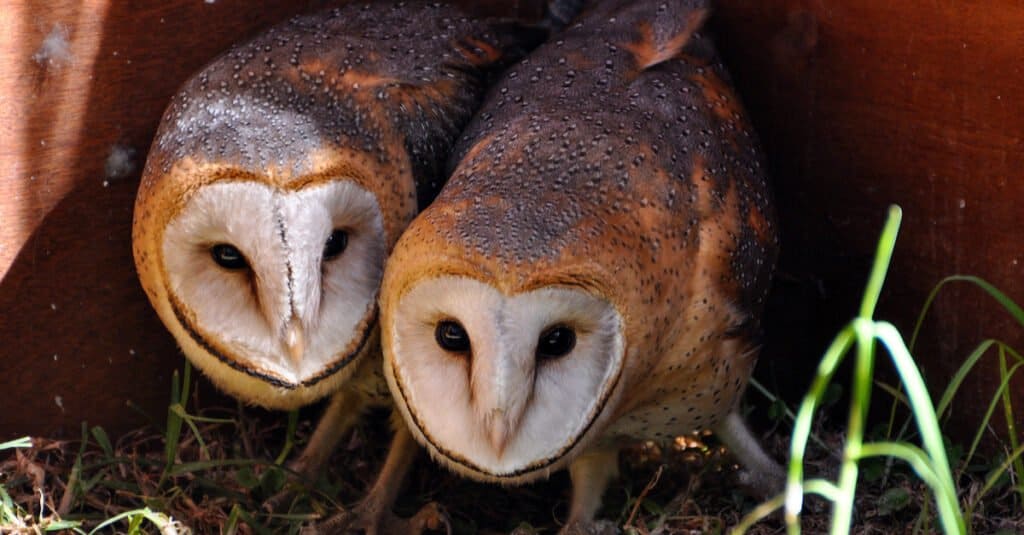
Owl mating season typically occurs in the spring, with some species mating during the winter months.
©Mike Browne/Shutterstock.com
Owl mating season takes place once a year, typically during the spring. The majority of species, especially those in temperate or subarctic climates will mate in the spring. However, some owls mate during the winter months. The time for mating will vary based on the species and the climate it’s adapted to.
Do Owls Mate for Life?
Owls tend to be monogamous, with one male and one female bonding and mating during a season. Both males and females play vital roles in caring for the young. After caring for the young, they may part ways and find another mate during the next season. However, many species of owls do mate for life and will either stick together or find one another when the next breeding season rolls around. The species that are known to mate for life are the barn owls, barred owls, great horned owls, spotted owls, and eastern screech owls. Although mainly monogamous, owls also engage in polygyny in which the male of one territory will have multiple female mates. An article in The Condor explains that polygyny has been seen in at least 10 owl species.
Courting and Nesting Behaviors
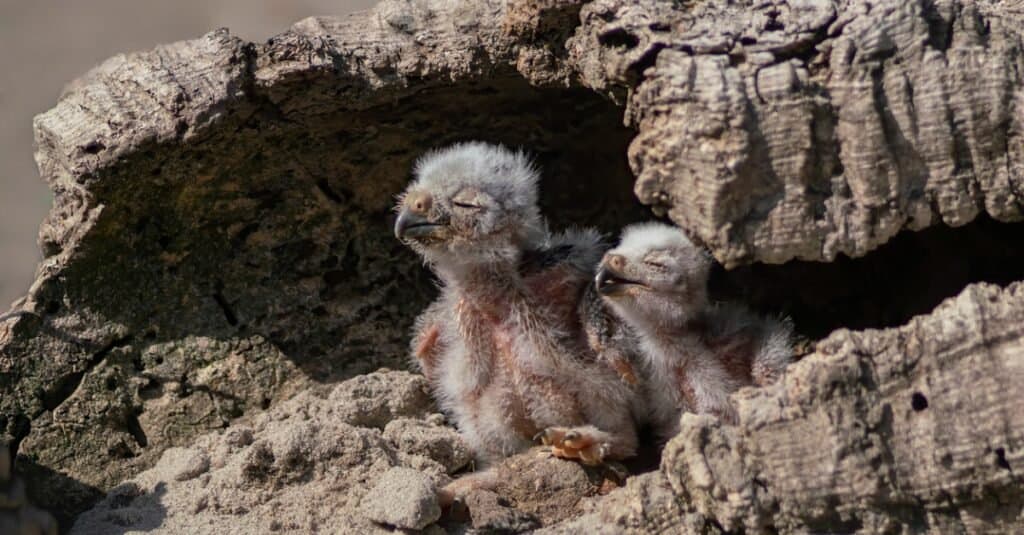
Owls are opportunistic nesters who take advantage of existing nests, cavities, and structures.
©iStock.com/AGD Beukhof
Male owls will often engage in display flights when courting females. During territorial flights, they’ll screech and hunt for prey to present to the female. “Moth flights” are when the male owl hovers in front of the female with his feet dangling. Females may perform display flights as well, leading up to the time of mating. Hoots and other vocalizations are part of the mating process and these behaviors vary by species. Courtship feeding by the male is common, and mutual preening sometimes occurs as well.
These enigmatic birds of prey are opportunistic nesters. Instead of spending the energy to build their nests from scratch, they’ll often take advantage of existing nests that have been abandoned, rock crevices, ledges, holes in barns or buildings, tree snags, and other large cavities. Some, like the snowy owl, are ground nesters that will add plant material to a hollow in the ground to use as a nest. Once the female lays the eggs it’s her job to incubate and protect them, while the male typically spends time hunting and bringing the catch back to his mate.
Barn Owl
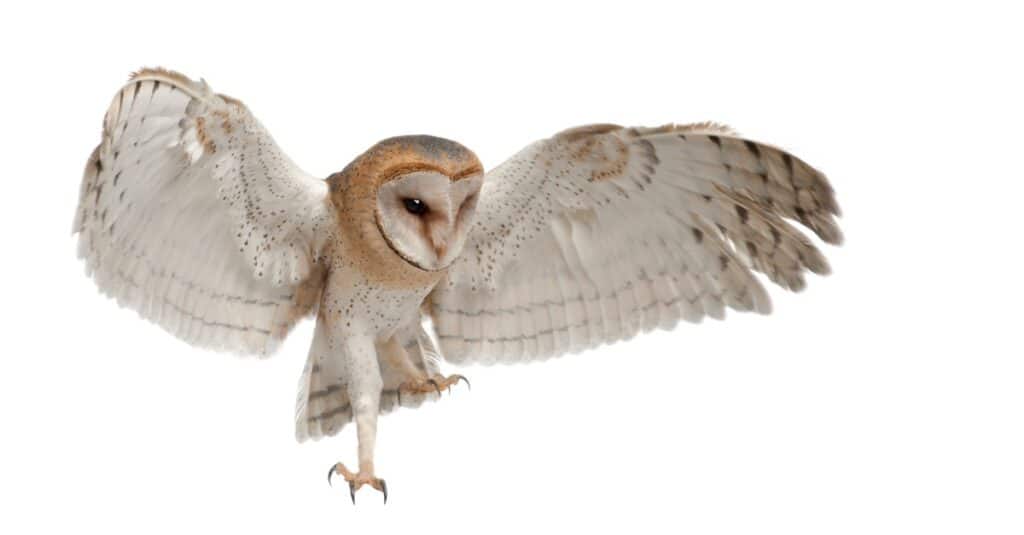
Barn owls have a large breeding window.
©iStock.com/GlobalP
March through June is the typical season for barn owl breeding. However, they have a larger breeding window than many other species and may mate at other times during the year. Clutch size typically varies from 2 to 12 eggs laid, but 4 to 7 is the average.
Snowy Owl
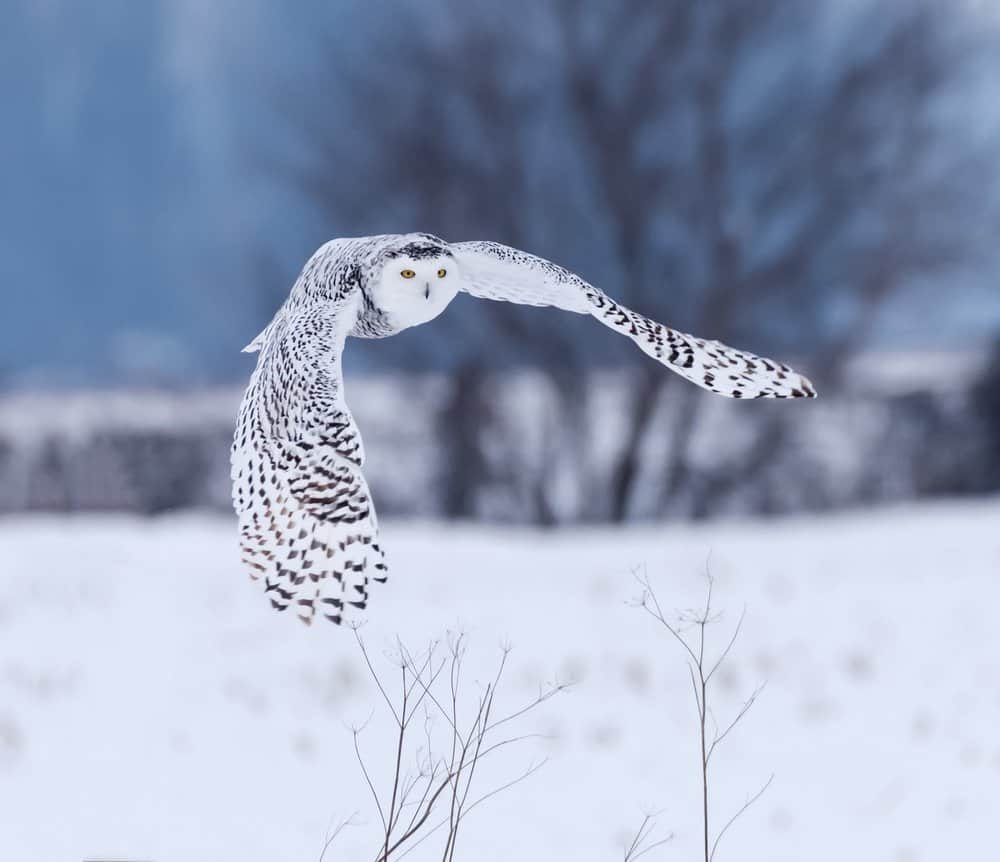
The size of clutch the snowy owl lays is dependent on food availability.
©FotoRequest/Shutterstock.com
The snowy owl lives on the Arctic tundra, or in open grasslands and fields. It begins courtship rituals during midwinter through March and April and breeding occurs in May. It almost always nests on the ground, a small depression made in the tundra by the talons of the female. Sometimes a pair may nest at the same spot for years. Clutch size is dependent on the food supply that year, but they typically lay 3 to 11 eggs. Breeding season is highly dependent on the availability of prey, like lemmings, and snowy owls may not nest at all during years when they are scarce.
Great Horned Owl
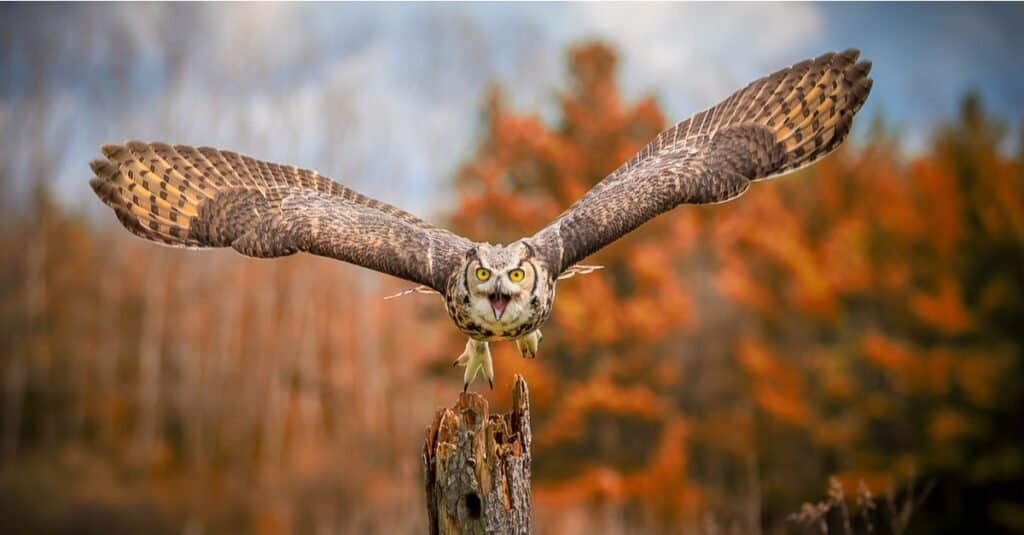
Great horned owls mate during the winter.
©Imran Ashraf/Shutterstock.com
The great horned owl is known to mate during the winter months. This is to give their hatchlings an extended time to grow and learn the skills needed for survival. During the fall, courtship displays will begin for great horned owls. As they’ll be partnered for life, they take their time finding the right mate. They call loudly with a range of hoots and other vocalizations. Once a pair claims a nest, they’ll sing out in hooting duets to show other owls that their territory is taken. In February or March, the female owl will lay eggs and proceed to incubate them over the next two months. The male will hunt and bring her food so that she can keep the eggs warm and protected.
Spotted Owl
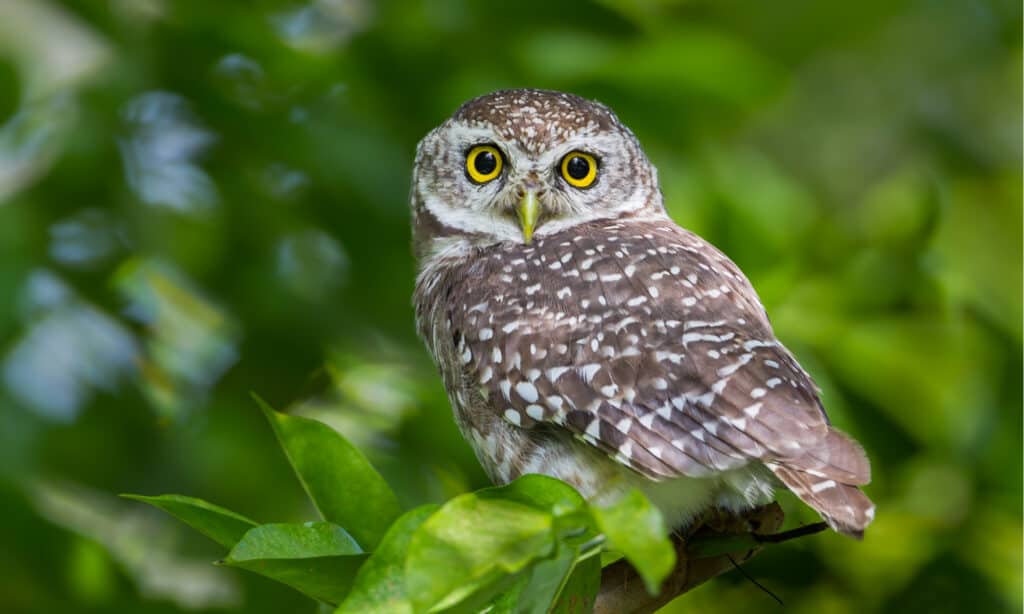
The spotted owl has an average clutch size of three.
©kajornyot wildlife photography/Shutterstock.com
Mates for life, spotted owls typically find their mate and begin to roost together during February. Breeding season for the spotted owl typically occurs from March to September. The average clutch size for this species is 2 to 3 eggs, occasionally 4 are laid. The timing of breeding is strongly linked to prey availability and pairs may not reproduce each season.
Burrowing Owl
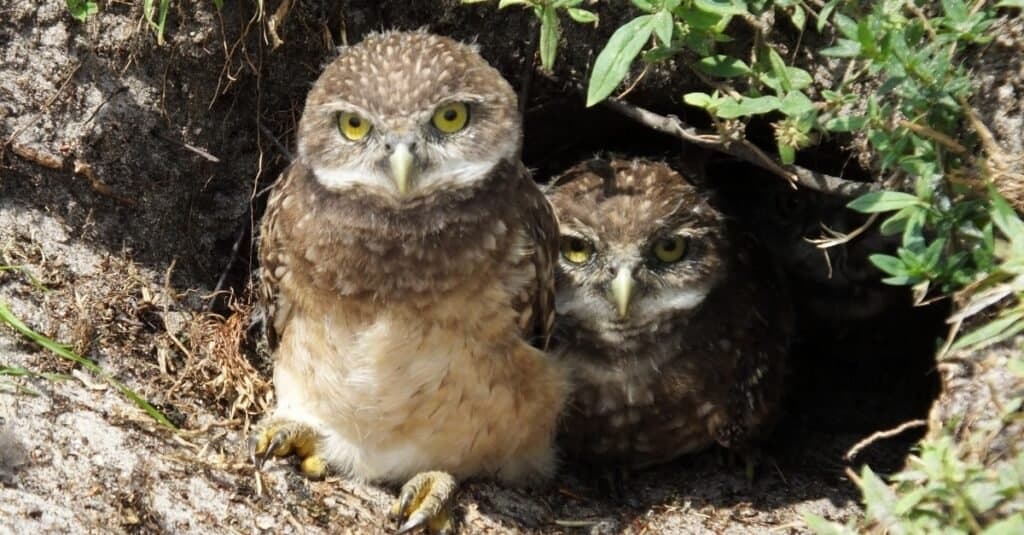
Although often monogamous, the burrowing owl will sometimes engage in polygyny.
©iStock.com/passion4nature
Often monogamous, burrowing owls will occasionally engage in polygyny with a male having two mates. Mating begins in early spring. They nest in open areas in burrows previously dug by other animals like ground squirrels. They may nest alone or in a group. This species lays a clutch of 6 to 12 eggs.
Long-eared Owl
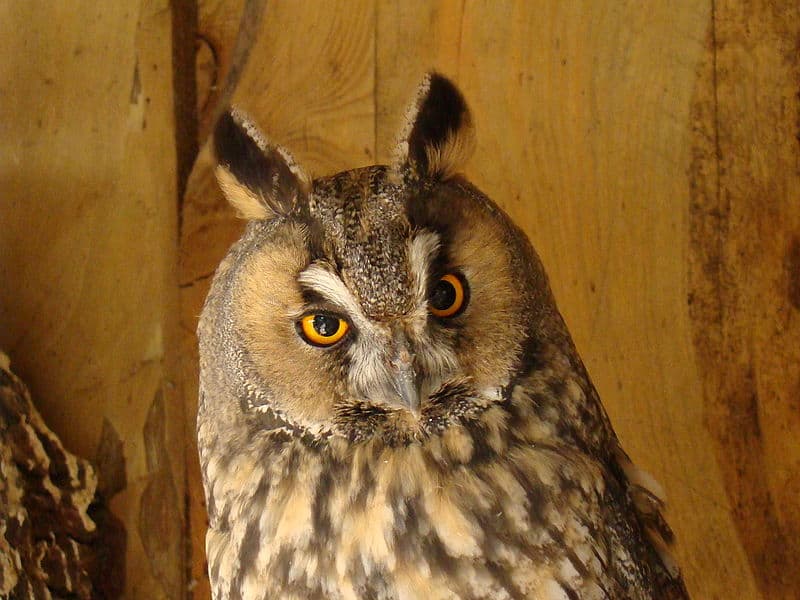
Long-eared owls begin territorial calls in the winter.
The long-eared owl is a woodland creature that nests almost exclusively in old stick nests of crows, magpies, ravens, hawks, or herons. Males of this species occupy territories first and they may begin their territorial calls in the winter. Nesting happens primarily during the spring, from Mid-March through May. They lay a clutch of 3 to 8 eggs, averaging 4 to 5. The size of the clutch for this species tends to increase from south to north and from east to west.
Barred Owl
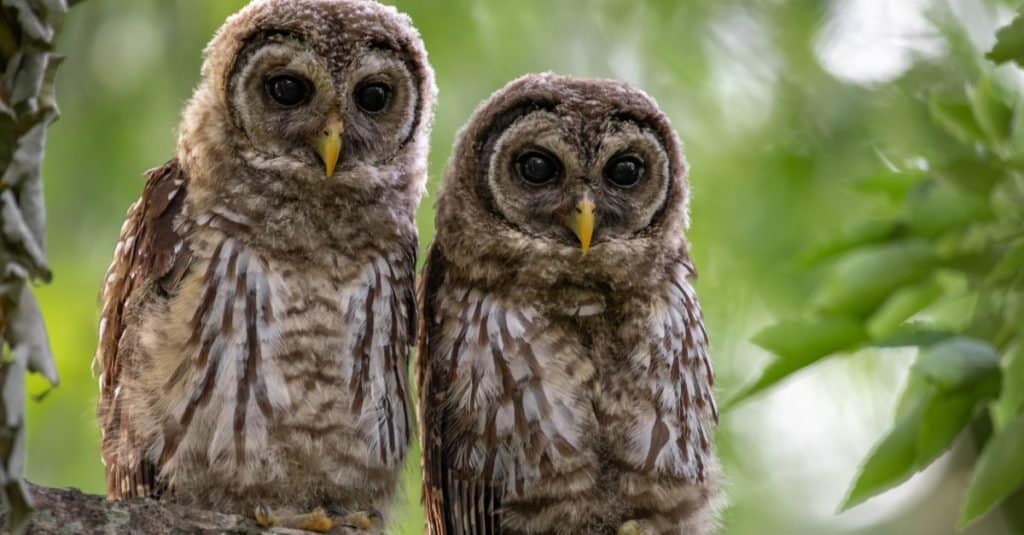
The mating season is springtime for the barred owl.
©iStock.com/Harry Collins
Barred owls begin their courtship activities in February and breeding usually occurs between March and August. This species tends to nest in cavities or in the abandoned nests of hawks, squirrels, or crows. They typically lay 2 to 4 eggs.
The photo featured at the top of this post is © AlekseyKarpenko/Shutterstock.com
Thank you for reading! Have some feedback for us? Contact the AZ Animals editorial team.






